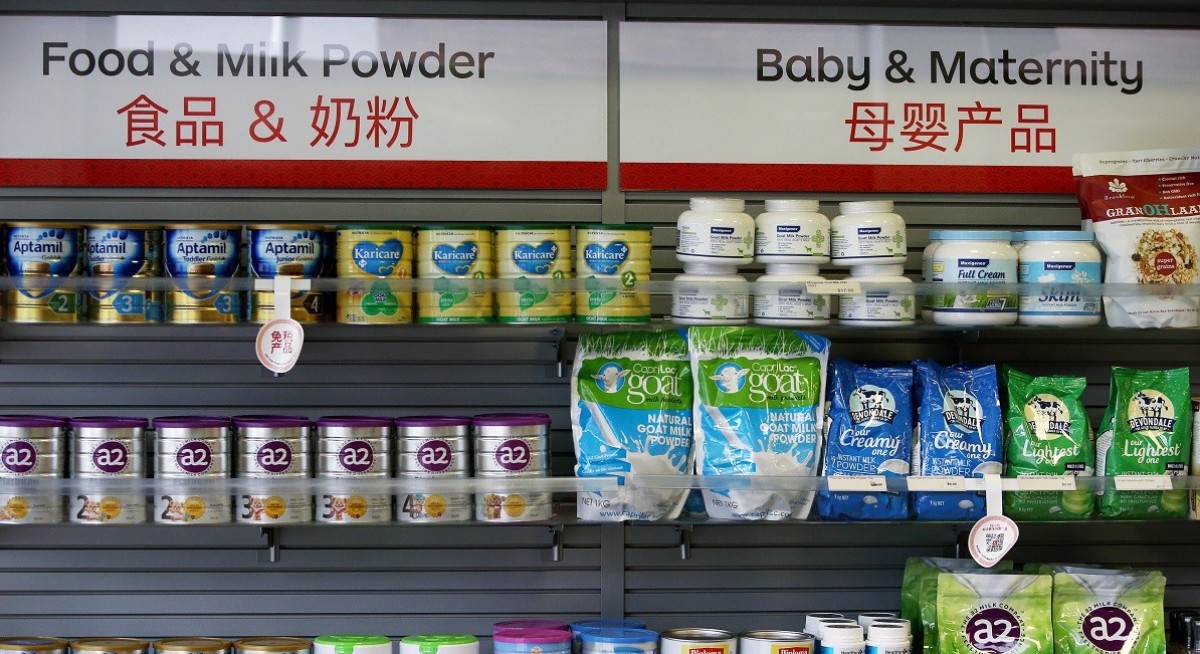Chinese consumers’ concern with food safety is centred on a simple question: Is this food safe to eat? It’s a question that is perhaps less urgent now than it was a decade ago, or in 2008.
However, the trauma from the 2008 baby food crisis forever reshaped consumer behaviour in China. Food safety became a dominant issue for new parents and this concern has never abated. Markets like Australia were overwhelmed by demand for safe baby milk formula. A thriving semi-legal trade developed between Hong Kong and China, and limits were imposed on the number of baby formula tins that were allowed to cross the border.
In Australia, xenophobic fears blamed shortages of baby formula on unrestricted buying from China using local “daigou” agents — people who buy goods overseas and resell them in China. The concerns spilled over into Singapore.
Today, although the demand frenzy has diminished, the heightened concerns about infant food safety have not.
See also: China set to stick with export-driven growth as it shakes off tariff scare
The recent Gansu kindergarten scandal where lead paint was found to be added to children’s food has once again triggered a visceral response from Chinese consumers. It alerted parents across China to the need for extreme vigilance when it comes to everything to do with their children.
It is not likely to trigger a new run on baby formula from overseas, but this renewal of heightened concern offers increased opportunities for exporters selling children’s products in China. It is a niche market because to a very large extent, the baby products market globally is dominated by Chinese production. However, specialist European children’s products have a well-established foothold in this market segment.
Many new parents will buy only brands viewed as transparent, and which are backed by rigorous safety standards. They look for brands promoted by trusted experts or influencers on specialist social media platforms.
See also: China's risky shadow banks back in spotlight after Xi's debt crackdown — Bloomberg
If your business is selling to this segment, or intending to, then this is the time to make very clear the quality controls and standards that you use. For food consumables, health products and medical accessories, this includes the traceability measures you have in place to ensure there is no tampering or substitution in the journey from your production facilities to the store shelves in China.
More than ever, this is the opportunity to show why parents should place their trust in you and your product over your competitors. This market segment, now dominated by parental anxiety, requires you to establish a bond of parental trust.
Technical outlook for the Shanghai market
The Shanghai Index is testing two resistance targets. These have the potential to slow the upwards moment, or, in the worst case, trigger a reaction into a new downtrend.
The rally rebound is moving quickly towards the trend line resistance. This is just below the trading band target projection at 3,700. The index value continues to hug the upper edges of the short-term group of averages in the Guppy Multiple Moving Average (GMMA) indicator. This continues to be a strong and consistent bullish relationship.
The steady separation in the short-term group of averages has persisted for nearly three months, suggesting traders have a high level of confidence that the uptrend will continue. The clustering along the upper edge of the short-term GMMA shows that traders believe there are more profits to be made, so they are holding onto trades rather than taking short-term profits.
For more stories about where money flows, click here for Capital Section
The long-term GMMA is widely separated, showing that investors also have confidence in the trend continuation. The wide spread shows investors are active buyers. Compression shows they have stopped buying and this leads to a loss in trend momentum. The current sustained wide separation confirms that the long-term GMMA is now the most significant support feature for any major pullback in the trend.
Trend line C defines the current short-term uptrend. Trend line B defines the longer-term uptrend and is not suitable for managing the current trending environment.
There are three target areas of resistance that may hinder any sustained trend continuation. The first target is near the previous high of 3,675 reached in October 2024. This is a psychological resistance level and was easily broken on Wednesday. As expected, this had little influence on the market because it falls just below a major historical resistance level.
The second and higher target is the value of the long-term trend line A. The projected trend line acts as a resistance feature. The index is testing this uptrend line as a resistance feature. A sustained break above this line is very bullish and puts the third upside target at 3,700 within reach.
The third target uses trade band analysis. The Shanghai Index behaviour is defined by well-established trading bands moving between support and resistance levels. The trading band price projection target is slightly higher than the October 2024 high and is placed at 3,700. This is also the value of the three market peaks made in February, September and December 2021.
Daryl Guppy is an international financial technical analysis expert. He has provided weekly Shanghai Index analysis for mainland Chinese media for two decades. Guppy appears regularly on CNBC Asia and is known as “The Chart Man”. He is a former national board member of the Australia-China Business Council. The writer owns China stock and index ETFs




